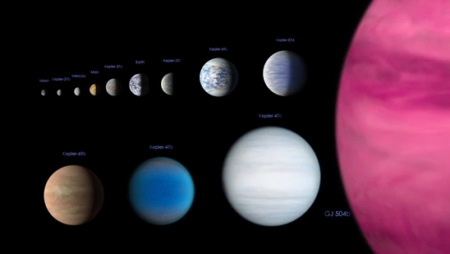James Webb Telescope captures its first image of planet beyond our solar system
Webb telescope has pictured ‘HIP 65426 b’ through four different light filters. NASA says that these observations could help to determine the size and age of the planet much more precisely

Using the powerful optics system of the James Webb Space Telescope (JWST), scientists have been able to take direct pictures of a planet beyond our solar system. The new image of exoplanet HIP 65426 recently released by National Aeronautics and Space Administration (NASA) is Webb's first picture of an exoplanet, which shows the immense prowess of JWST to explore the unseen universe.
The exoplanet 'HIP 65426 b' is younger but bigger than Earth. It is about 6 to 12 times the mass of Jupiter and about 15 to 20 million years old, Earth is 4.5-billion-year-old. NASA says that these observations could help to determine the size and age of the planet much more precisely. Webb telescope has pictured this gas giant through four different light filters.
"This is a transformative moment, not only for Webb but also for astronomy generally," said Sasha Hinkley, an associate professor who led these observations with a large international collaboration.
According to NASA, n exoplanet is a planet that is orbiting other stars beyond our solar system.
NASA's Kepler Space Telescope has shown that the galaxy has more numbers of planets than stars. The elements of these planets are similar to the planets of our solar system, although they do not necessarily revolve around any stars, as there are some exoplanets which are free floating and orbit around the galactic centre.
NASA estimates that apart from iron or carbon, some may have an abundance of water or ice.
Why is this image significant?
The first confirmed discovery of exoplanets was long before in the 1990s, but this is the first direct observation by JWST telescope of any planet beyond our solar system .
There are various indirect methods for detecting the exoplanets:
Observing Wobble
Astronomers observe the wobble of stars caused by the planets orbiting it. This wobble gives a clue of the presence of planets. The wobble can be observed by the Doppler shift method - a change in the colour of light that is coming from a star, and also by astrometry method.
Shadow method
When the planet comes in the line of sight of the observer and the star, the stars' light becomes dim, which is measurable enough for astronomers to establish the presence of the planet.
Through Gravity lens
If the planet comes between the star and the Earth, light coming on Earth from that distant star bends under the gravity of the planet. This bending of light gives evidence of the presence of any planet.
And then there is direct imagery - capturing picture of the planet with telescope.
Why is direct imagery complex ?
Directly imagery of exoplanets is hard because the stars around which planets orbit are 'millions of times brighter' than them. According to NASA, the HIP 65426 b planet is over 10,000 times fainter than its host star in the near-infrared, and a few thousand times fainter in the mid-infrared.
The emission from the host star overpowers any light or heat radiation reflected off of the planet, making it complicated for astronomers to capture the reflection from the planets but Webb telescope has become successful in capturing these reflections.
"At first all I could see was light from the star, but with careful image processing I was able to remove that light and uncover the planet," said Aarynn Carter, the researcher who led the analysis of the images.
This image shows the might of the Webb Telescope that its optics system has been able to capture such minute reflection from the exoplanet.



 Keep updated, follow The Business Standard's Google news channel
Keep updated, follow The Business Standard's Google news channel














